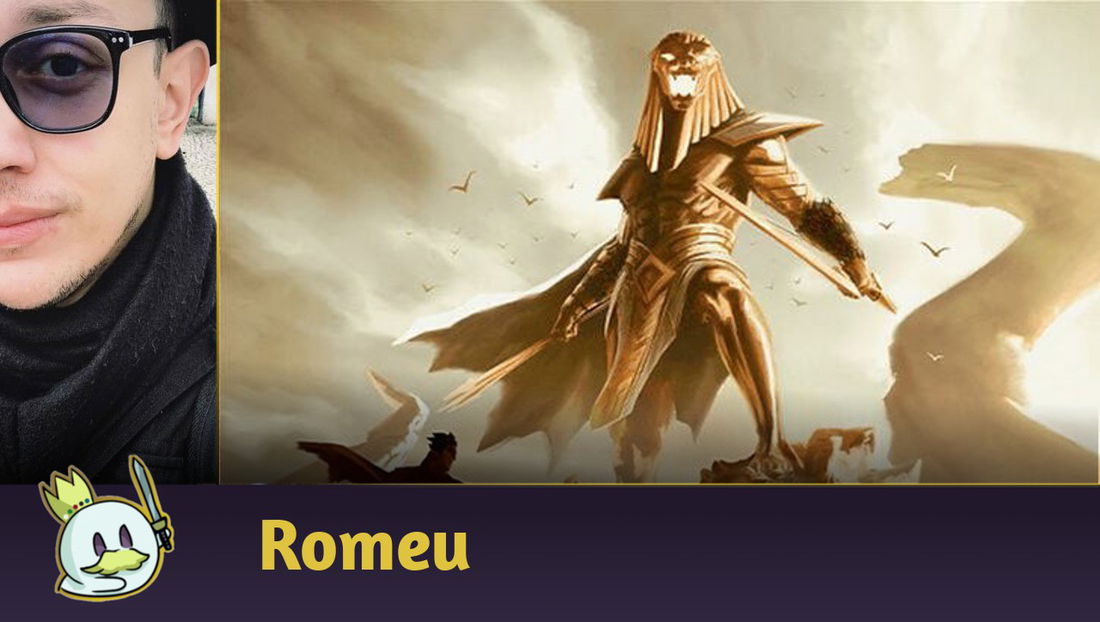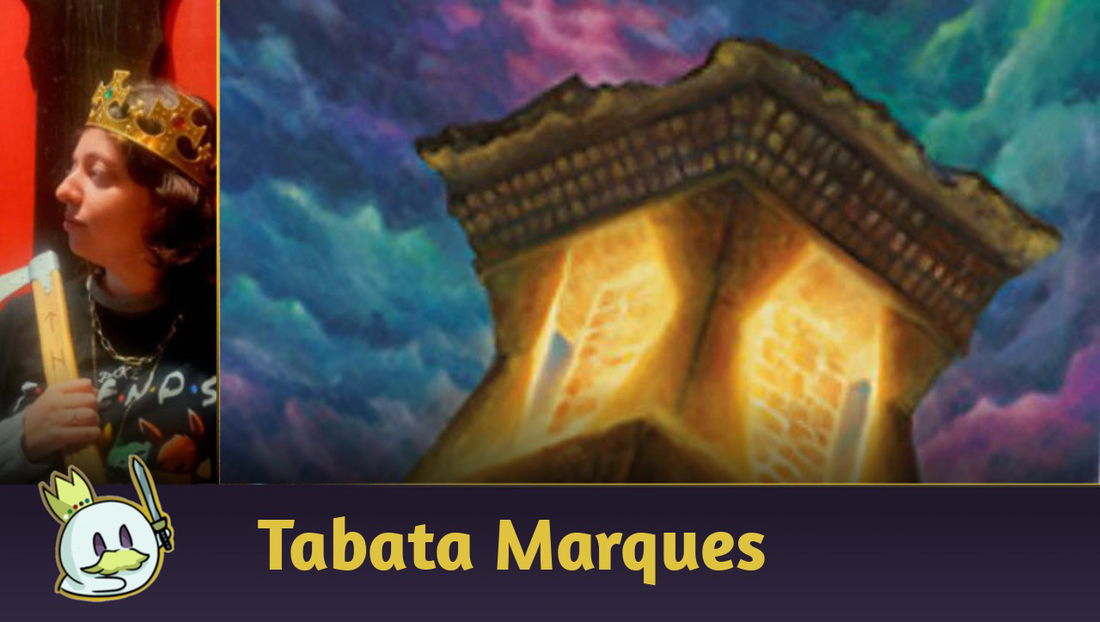Combos are an essential part of every TCG and even other game genres. The idea of mixing abilities, an A and B piece, or anything with the potential to break mechanics and/or win instantly captures the imagination of any player, and it is also one of the most creative ways to build decks.
In this article, we present the ten most iconic card combos in Magic. The list includes combinations that have made history in the game, whether due to their fame, competitive viability, or simply how impactful they were at some point. In addition, we also focused on combos that can win the game and gave more attention to the interactions of two cards, or that only require a third effect to trigger.
The 10 Most Iconic Combos in Magic: The Gathering
Channel Fireball

There's no way to discuss the most iconic combos without mentioning the original Magic: The Gathering combo. Legend has it that, at a time when deckbuilding rules were not yet defined or widely known, players envisioned a deck capable of consistently winning on the first turn, which involved using 20 copies of Black Lotus, 20 copies of Channel, and 20 copies of Fireball.
This combo works like this: a player with 20 life can pop a Black Lotus to generate 
Despite its fame, there are no records of this combo having been used in a competitive tournament, partly due to its short lifespan, since Channel and Black Lotus were restricted before the first World Championship in 1994. Still, it may have occurred at Vintage tables during the first decade of the game.
Twin Exarch

Splinter Twin was probably one of the most iconic combos in the history of Modern and one that is hard to forget in Magic's trajectory, both for the time it was an emblematic pillar of one of the most famous competitive formats, and for the reputation of injustice that it's banning gained over the years until it was finally unbanned in December 2024.
It involves enchanting a creature whose ETB effects untap a target creature with Splinter Twin and tapping it to create a copy. This copy will trigger the ETB and can untap the original enchanted creature, setting up a loop that generates infinite tokens with Haste to attack in the same turn. It was originally used with Pestermite, but Deceiver Exarch became its most famous target since it survived against Lightning Bolt.
What made Twin so effective was the ease with which we could apply it in the game and the natural evolution of the archetype from a full combo to a Combo-Control and, in some versions, a Combo-Midrange. It also capitalized heavily on False Tempo: because it was an Instant-Speed combo with Deceiver Exarch, the opponent was forced to play reactively every turn that the Twin player threatened the combo, culminating in extra pseudo-turns.
Twin has also become synonymous with other two-card combos that win the game with an efficient base that doesn't require full dedication to the combo, such as Saheeli Rai with Felidar Guardian.
Flash Hulk

For some, Flash Hulk is still the most powerful combo in Magic: The Gathering history due to the ease with which it can be deployed, but power creep has done its job, and we have no way to confirm its right to that title today.
It involves using Flash to cast Protean Hulk for free and then sacrificing it. When Protean Hulk dies, a player can fetch any number of creatures with a mana value of six or less, which will usually culminate in another creature-based combo.
The possibilities are endless: back then, the combo involved fetching Karmic Guide and Carrion Feeder to return Protean Hulk, sacrificing it to fetch Kiki-Jiki, Mirror-Breaker and starting a loop between these three cards. Today, there may be more efficient options, and Flash was such a powerful card that it was even banned from Commander due to the problems it caused in cEDH.
Tinker

Tinker is one of the most powerful combo pieces in Magic: The Gathering, and gained combo-kill potential when New Phyrexia brought Blightsteel Colossus into play. With it, we can sacrifice any artifact to get an 11/11 creature with Indestructible, Trample and Infect for only three mana, giving the opponent a turn to deal with the threat or lose the game.
In addition to the combo-kill with Colossus, Tinker also enables other combos, depending on how each list is built, and one of the oldest and most famous interactions between two cards can also be sought by it.
Vault Key

Time Vault is, in theory, a tweaked version of Time Walk that gives the opponent a benefit before being used by its controller, but Urza's Saga brought one of the first ways to take advantage of it: Voltaic Key untaps artifacts for a very low cost and already had interactions with Grim Monolith that were widely used at the time.
With both pieces together, simply untapping Time Vault every turn with Voltaic Key will grant infinite turns. This interaction is quite famous in Vintage and today Time Vault is one of the common targets of Tinker, since Urza’s Saga can search for Voltaic Key.
In addition, there are other cards that untap artifacts for a low cost, such as Manifold Key, facilitating access to cards that interact with Time Vault.
Oracle Consultation

Commander is, today, the most famous format to discover new combos and where most of them happen. Due to its multiplayer nature, combos are the best way to end games, and none of them are as efficient as Oracle Consultation.
Demonic Consultation requires naming a card and exiling cards from the top of the library until you find the revealed card. So if we name something that isn't on our list, like You Are Already Dead, we can exile the entire deck. What would normally be a bad thing becomes our ticket to a quick win with Thassa's Oracle, whose ability makes its controller win the game if they have fewer cards in their deck than their devotion to blue.
As the fastest combo in Commander today, there is debate whether Thassa's Oracle should still be legal in the format, especially when the same result can be achieved with cards with higher mana values, like Jace, Wielder of Mysteries and Laboratory Maniac.
Exquisite Bond

Widely known at casual Commander tables, Sanguine Bond and Exquisite Blood have many variants available today. For example, the interaction between them can be reproduced in Standard format with Bloodthirsty Conqueror and Enduring Tenacity, but it has not yet produced any relevant results.
The combo involves the way both enchantments trigger: whenever the opponent loses life, Exquisite Blood makes its controller gain life, which triggers Sanguine Bond, where whenever its controller gains life, the opponent loses that same amount of life, starting an infinite loop between the two permanents that ends with the player's victory.
Vampire decks are the most common to have this combination due to the aesthetic theme of both cards and the fact that this type has other effects that trigger in similar ways, such as the aforementioned Bloodthirsty Conqueror and Vito, Thorn of the Dusk Rose.
Hex Depths

Dark Depths was, for years, a card with no real viability in Magic. Despite its combo with Aether Snap, it never really reached the point of having competitive potential - but that changed when Zendikar introduced Vampire Hexmage and turned Dark Depths into one of the most powerful combos in Extended.
Vampire Hexmage can be sacrificed to remove all counters from a permanent. While this ability was designed to deal with Planeswalkers, its interaction with Dark Depths allows the land ability to trigger as early as turn two, putting a 20/20 token with indestructible on the battlefield for your opponent to deal with.
At the time, there were few exile effects in competitive Magic. Today, there are many ways to respond to the token created by Dark Depths, but the interactions with it have also grown: Thespian’s Stage is another card that makes it possible to have a Marit Lage token in play as early as turn three and without spending spell slots, since we can copy Dark Depths with it, sacrifice the original, and then trigger the copy to create the token.
In addition, because they are two lands, we can resort to them with Life from the Loam, which made the combo viable in more archetypes in Legacy.
Painter’s Stone

Speaking of Legacy, one of the oldest combos in the format is Painter’s Servant with Grindstone, but this only gained traction when Urza’s Saga provided an easy and efficient way to search for one of the pieces, making it one of the most famous decks in the Metagame.
The combo involves having Painter’s Servant in play, naming a color, which will transform all cards in all zones - including in the library - into cards of the chosen color. From At this point, simply activate Grindstone, which will mill two cards from the top of the opponent's library. Since they share a color, the process will repeat itself and start a loop that will end with the opponent without a deck.
Heliod Ballista

The last combo on the list is also the most recent among them: Walking Ballista is, naturally, a payoff for infinite mana, as it leads to infinite damage, but with Heliod, Sun-Crowned, its potential has only grown because it now has a powerful two-card interaction that can be used in several archetypes.
Heliod, Sun-Crowned puts a +1/+1 counter on a creature whenever its controller gains life and has an ability that grants Lifelink to a target creature. With it in play, simply cast a Walking Ballista with X = 2 so it enters with two +1/+1 counters, then use Heliod's ability to give it Lifelink and remove a counter to deal one damage to the opponent - Heliod's ability will trigger, and you can put a +1/+1 counter on Walking Ballista, repeating the process for infinite damage.
This combo is very famous because it permeated both Pioneer, where it was banned along with two other combos, and Modern, where it starred in one of the best decks of the format until the release of Modern Horizons 2. Today, it still appears occasionally in Modern, but its place of prominence has been in Commander, where it offers a two-piece combination that goes well with many different proposals of its color combination.
Conclusion
That's all for today!
If you have any questions, feel free to leave a comment!
Thanks for reading!













— 评论 0
, 反应 1
成为第一个发表评论的人